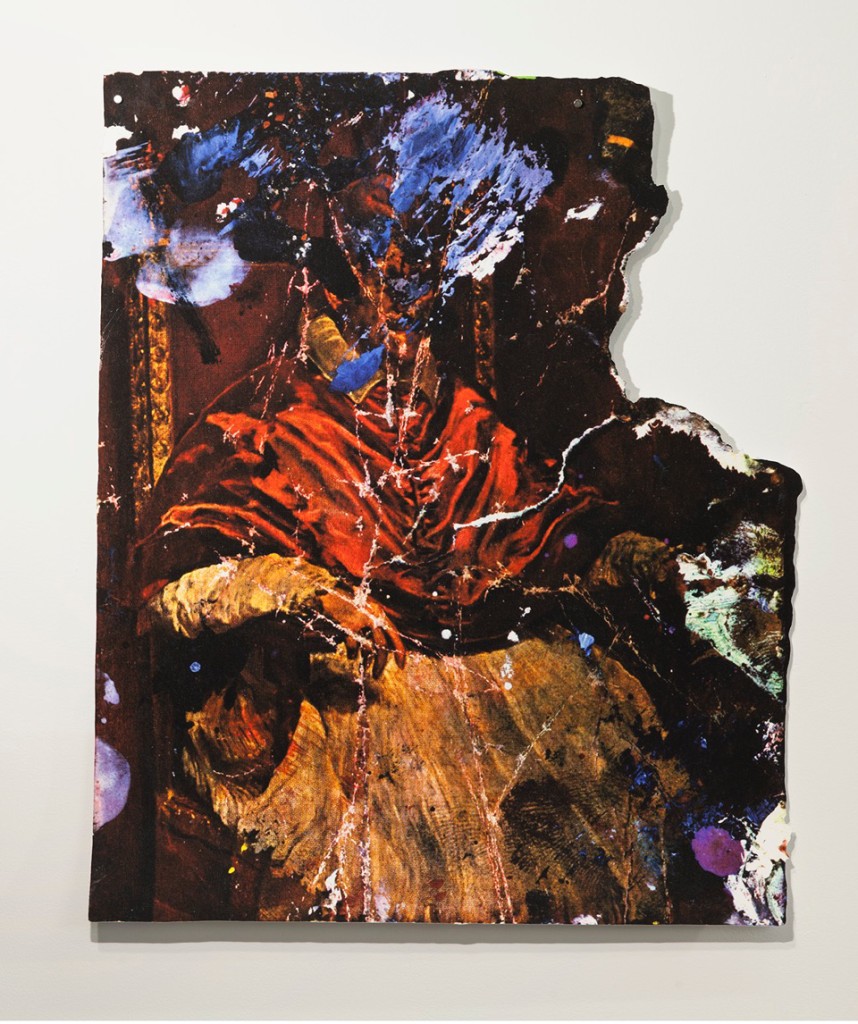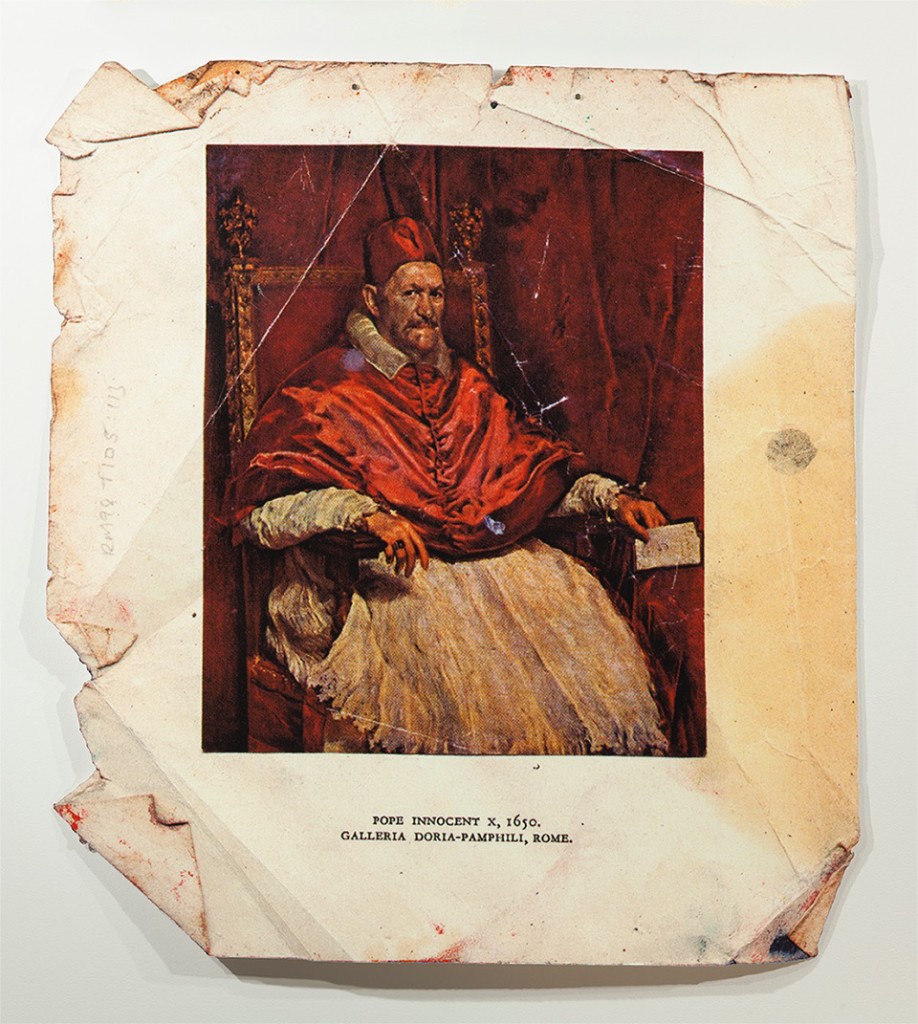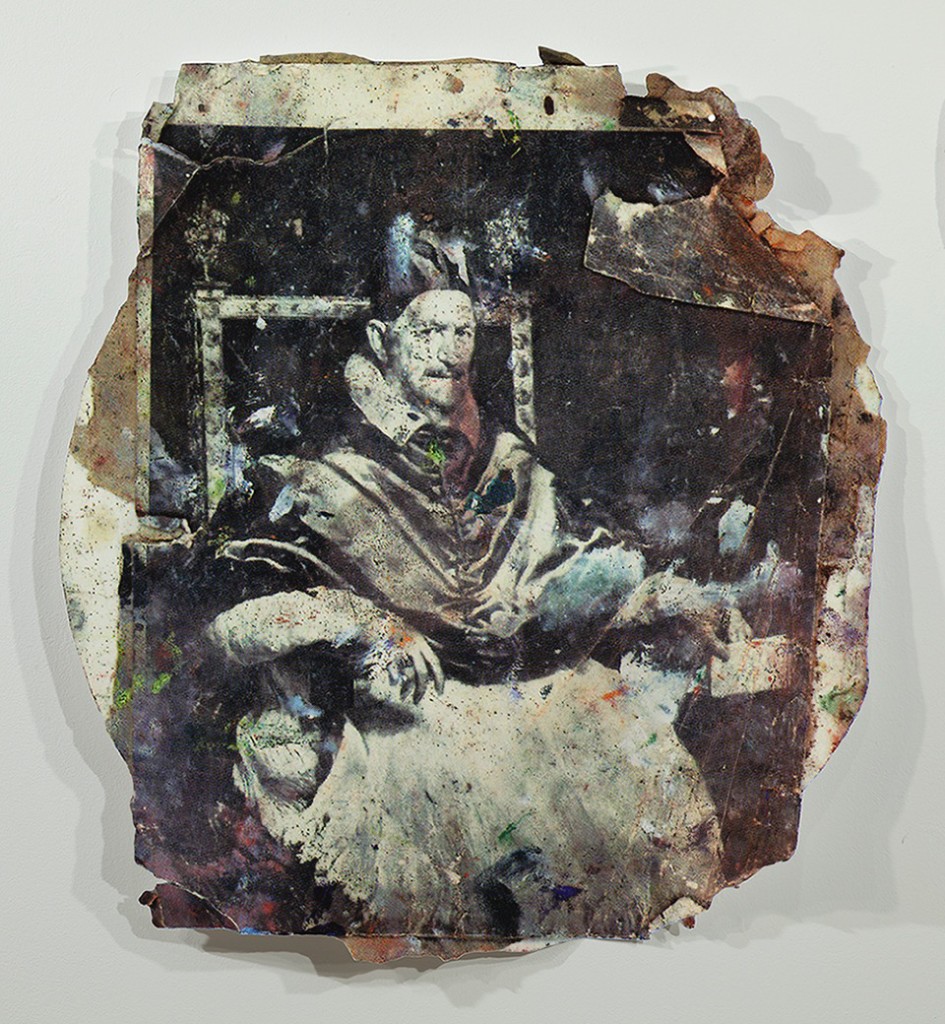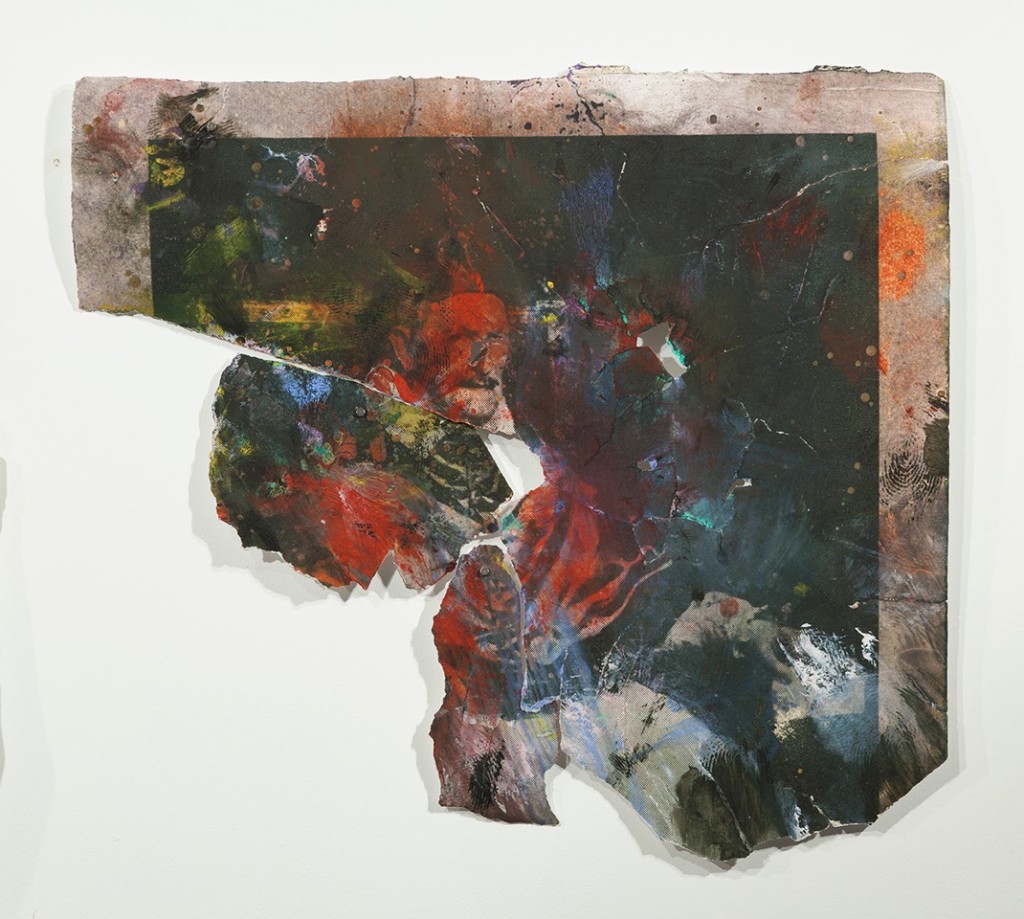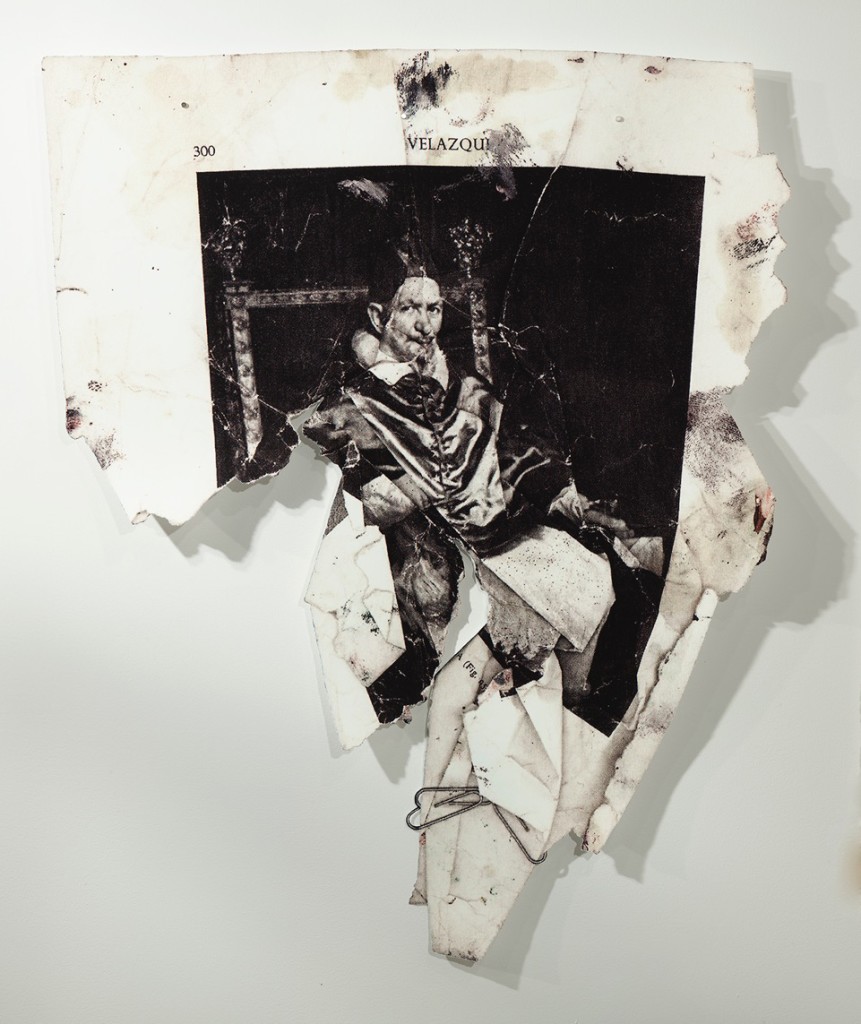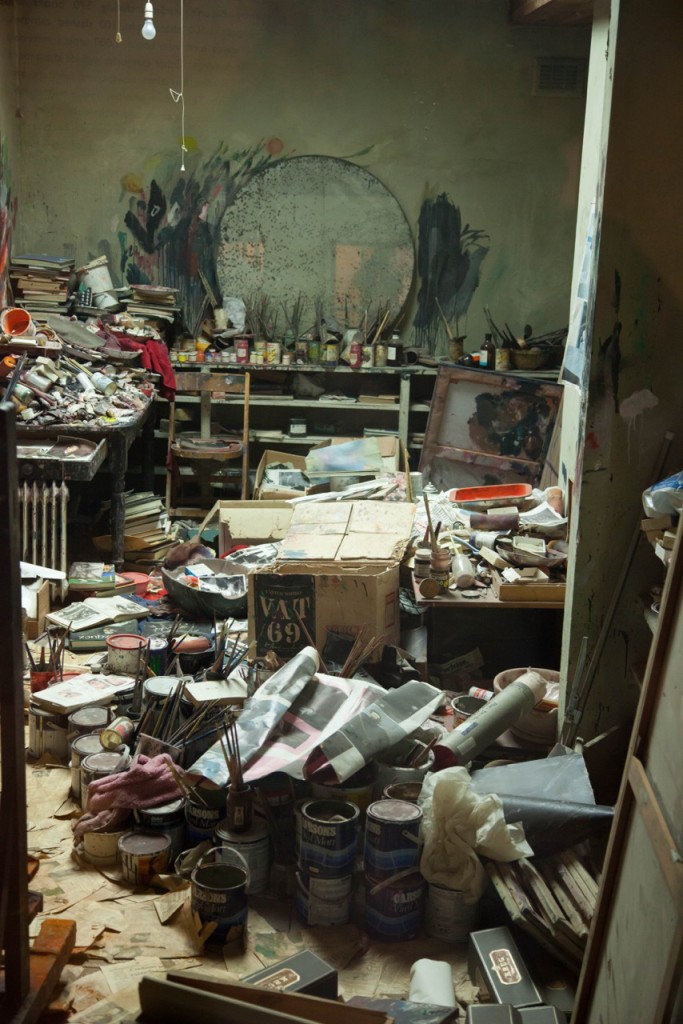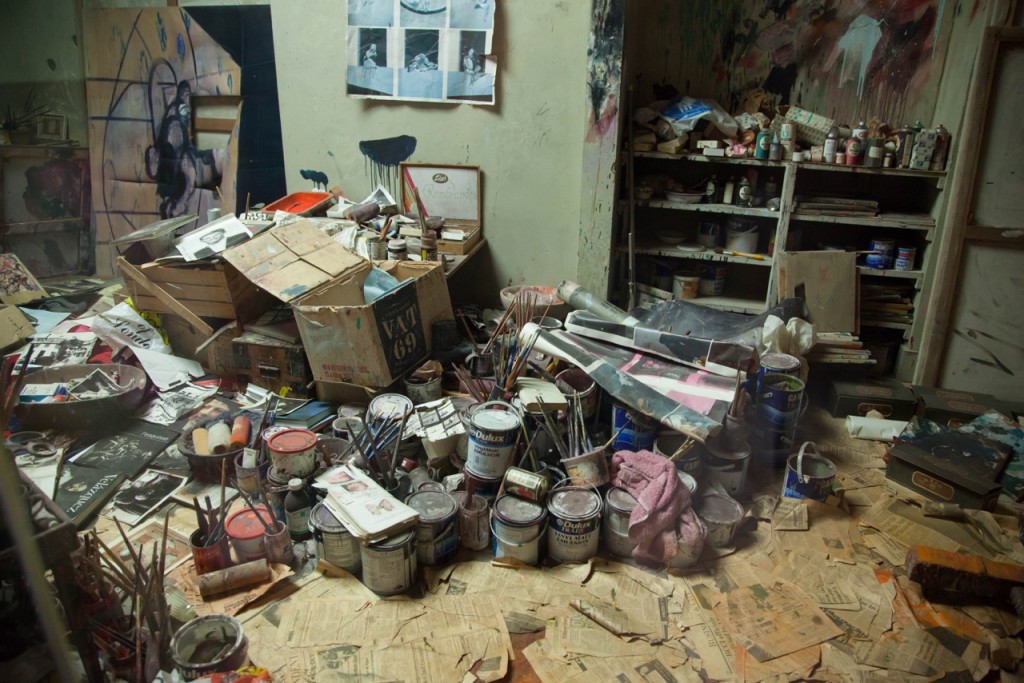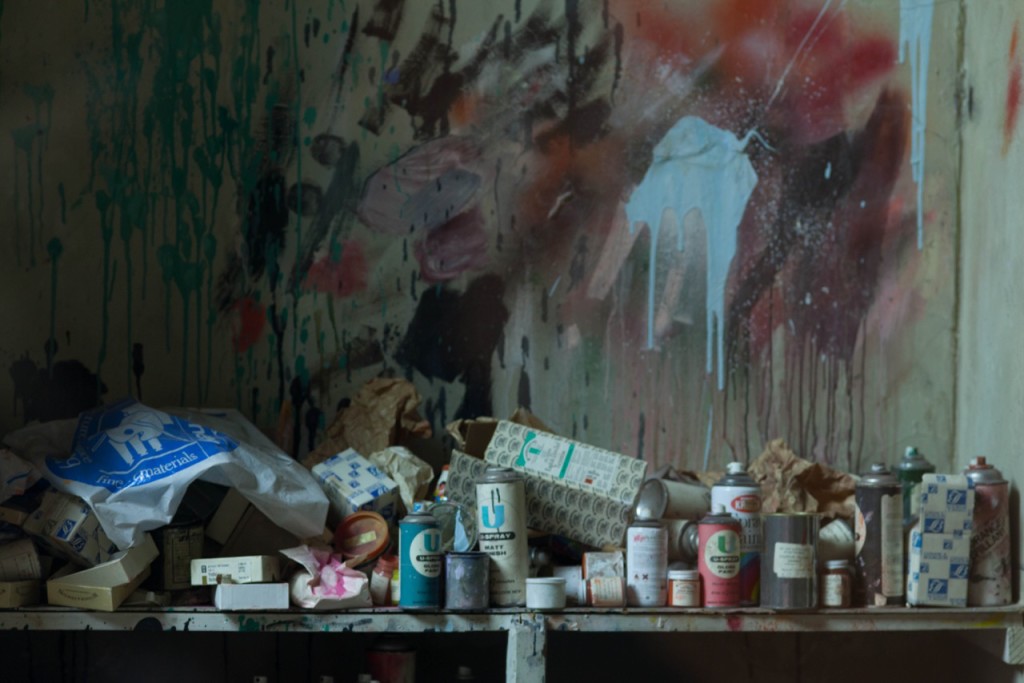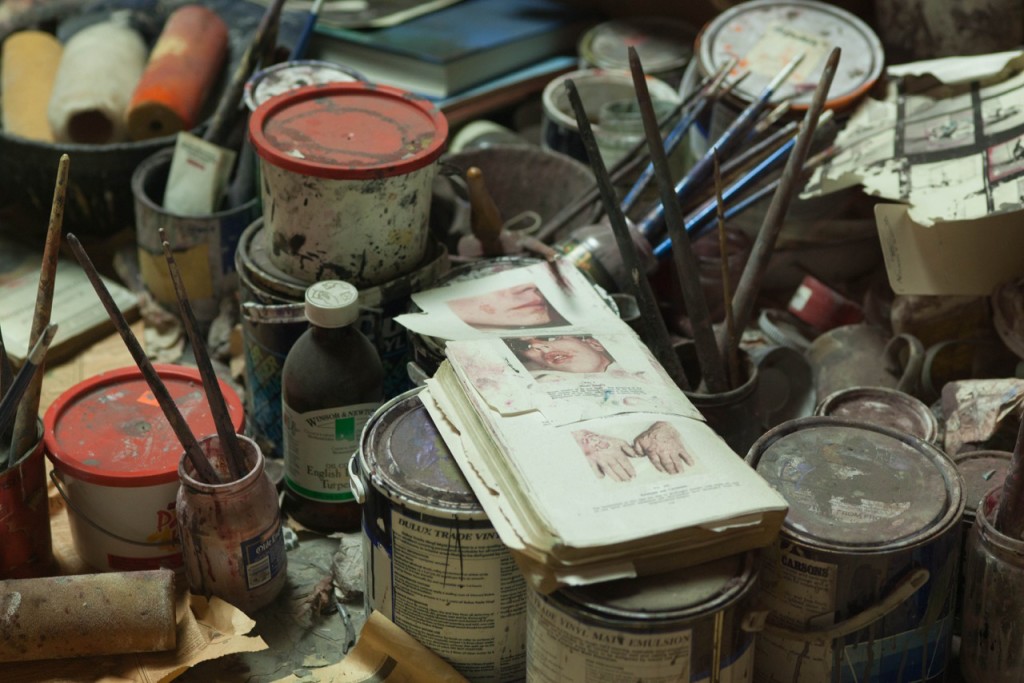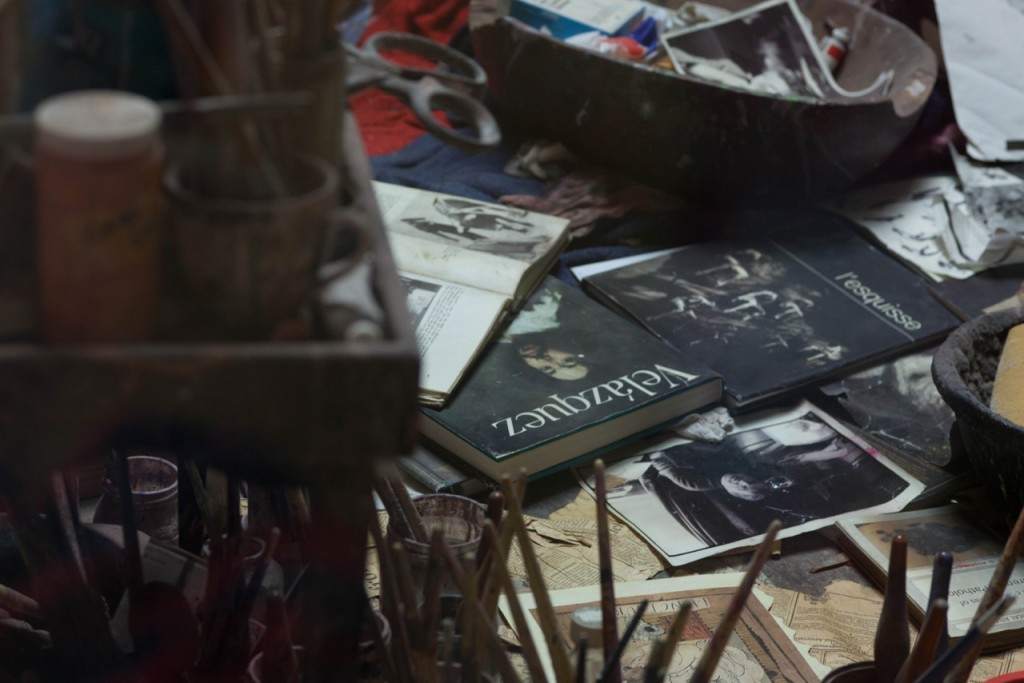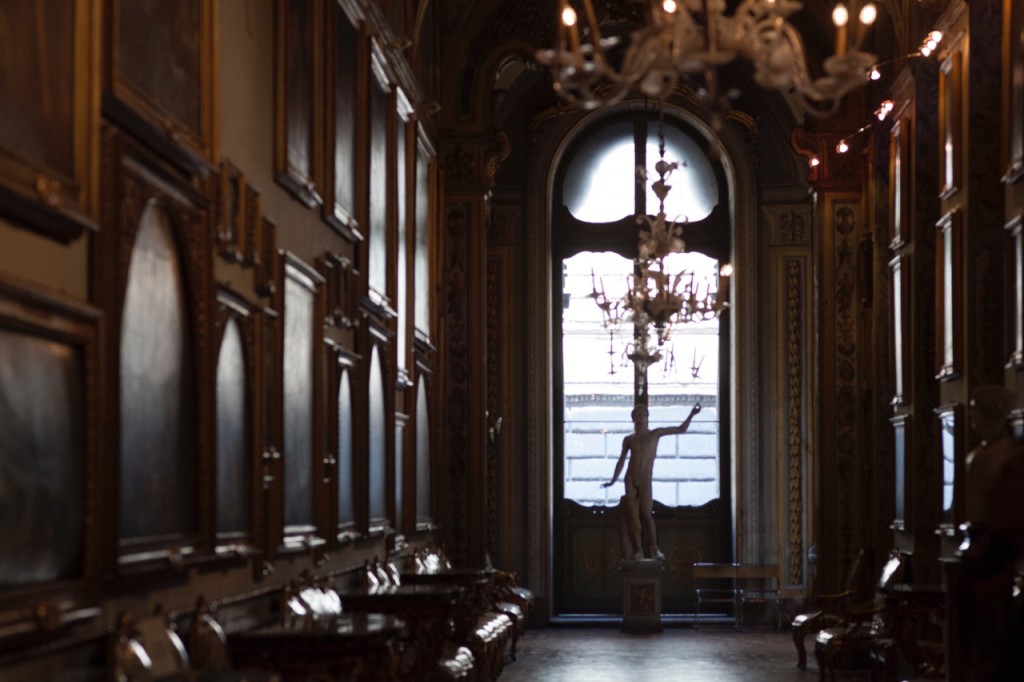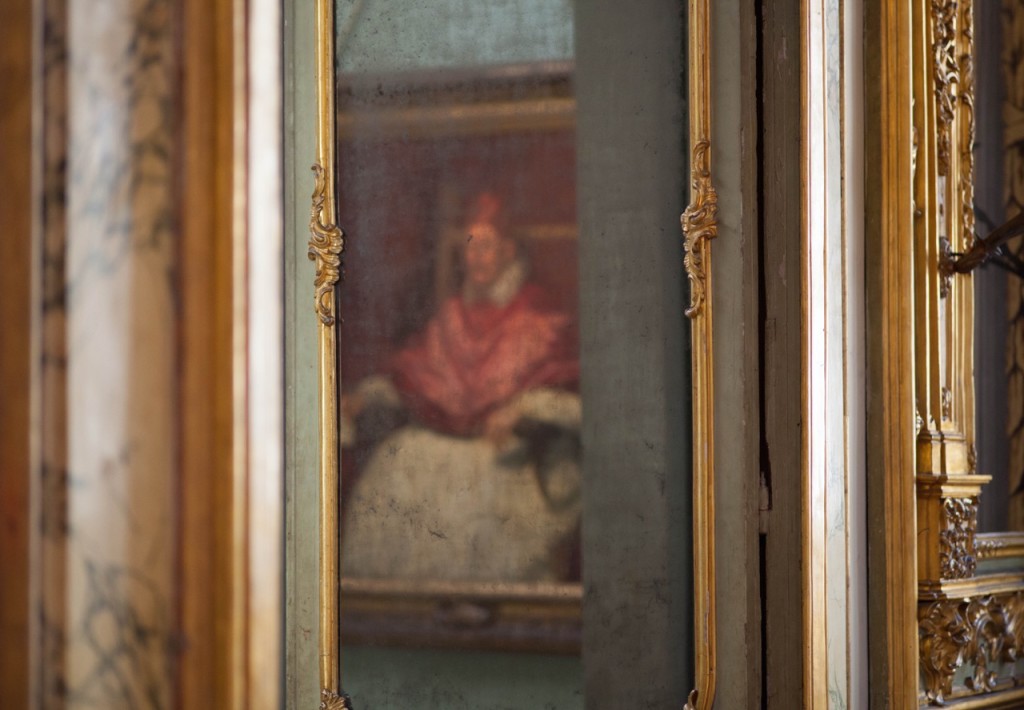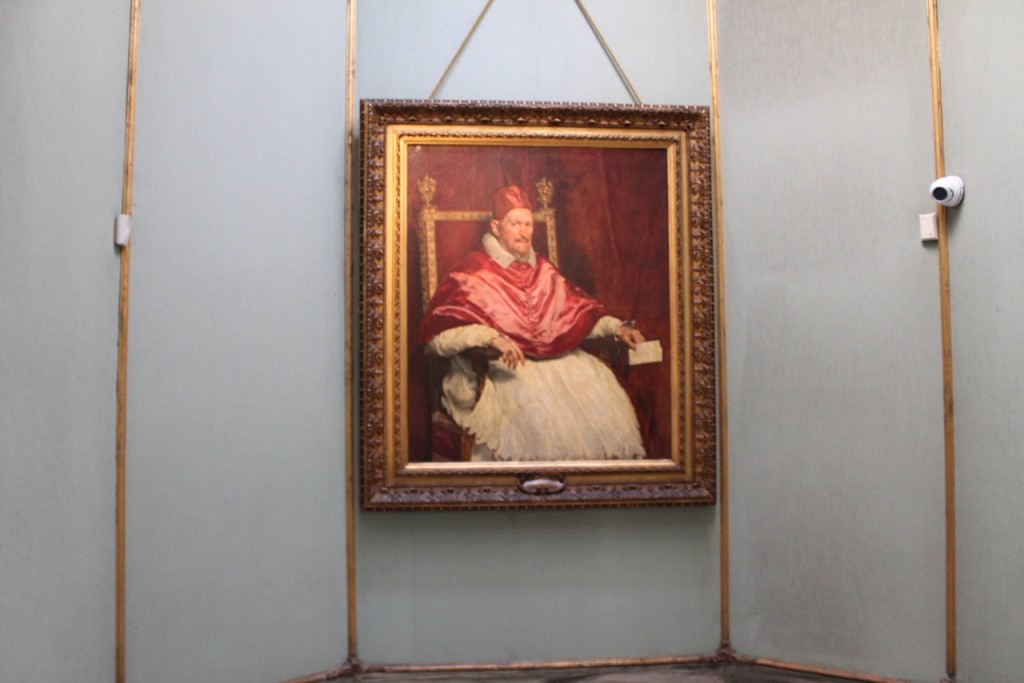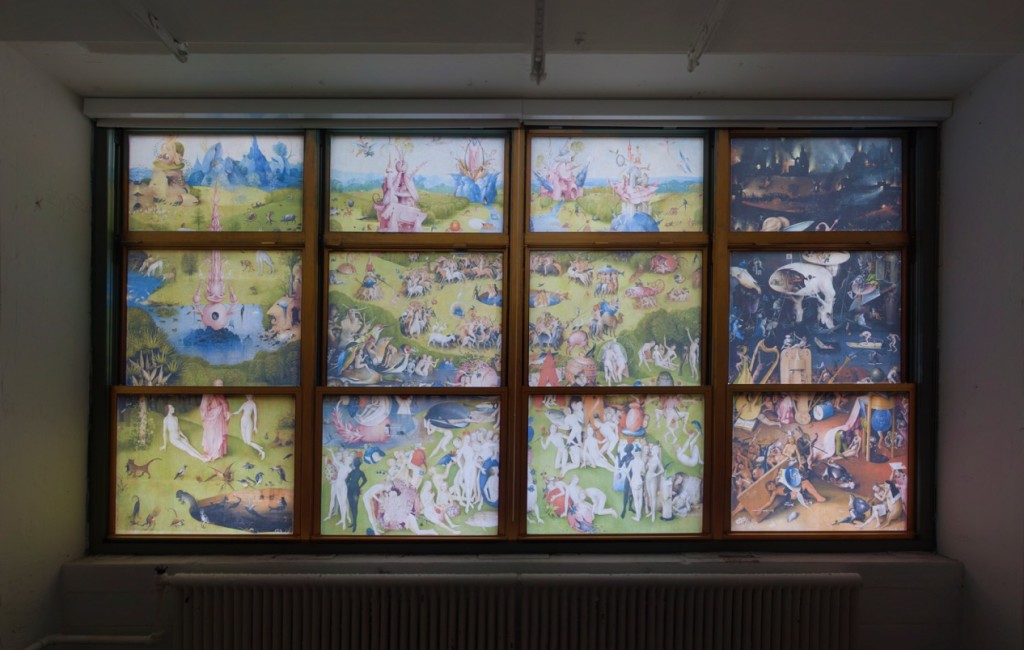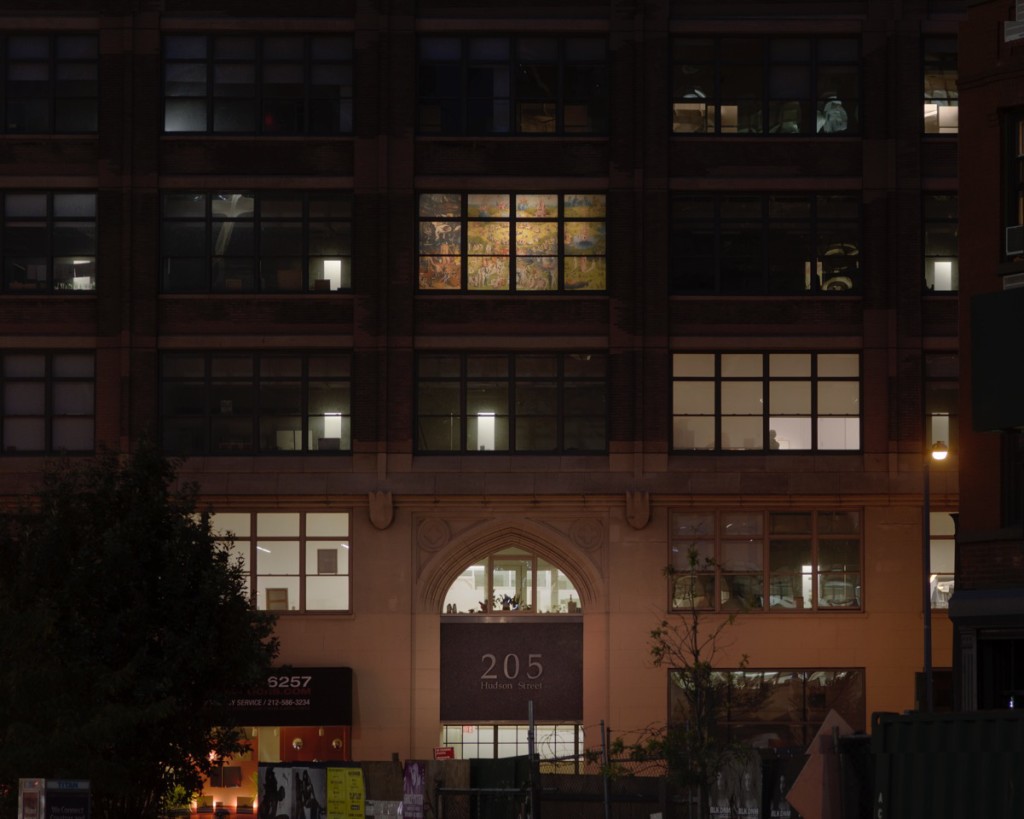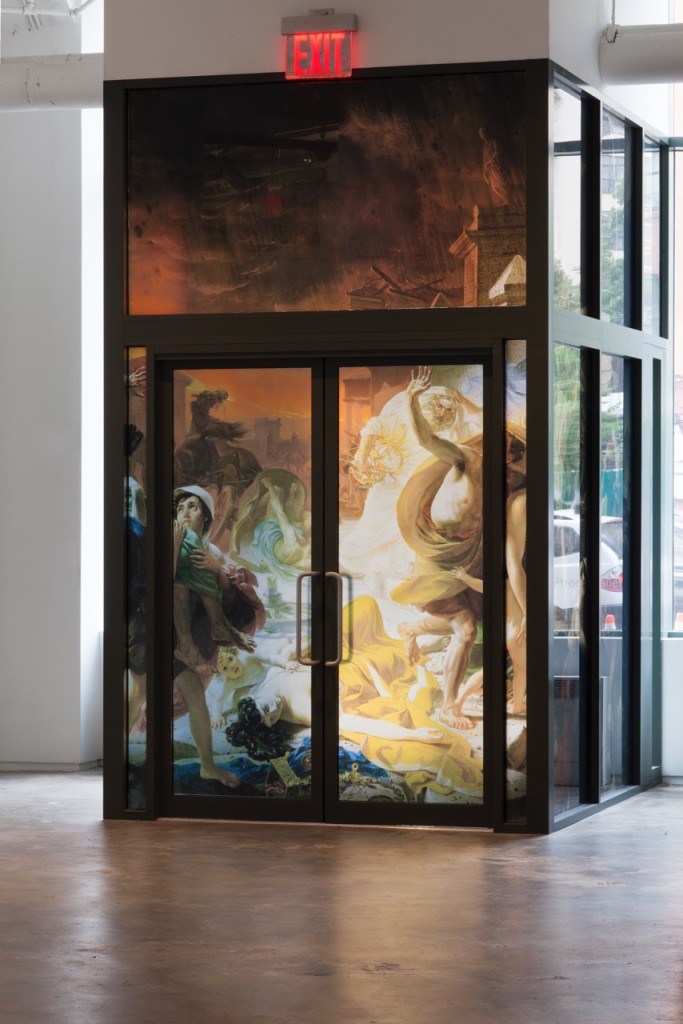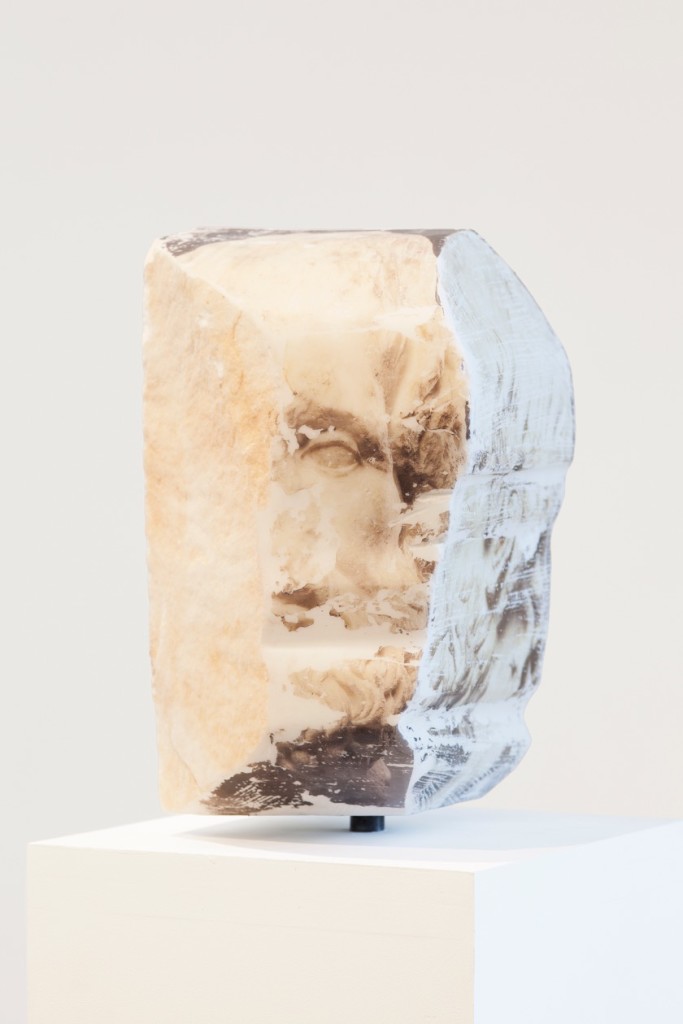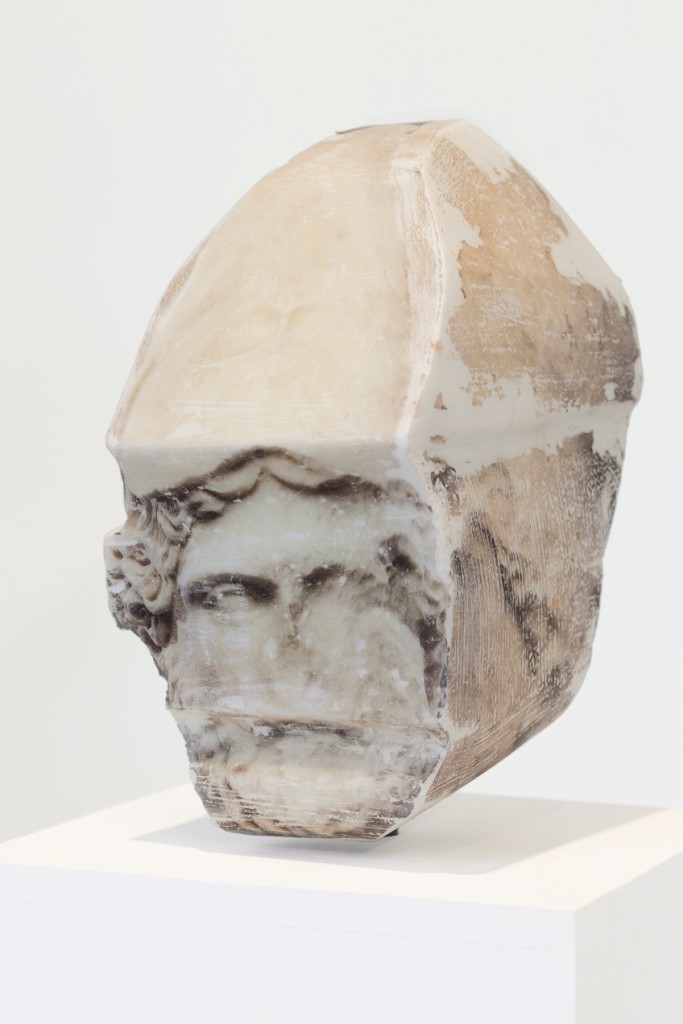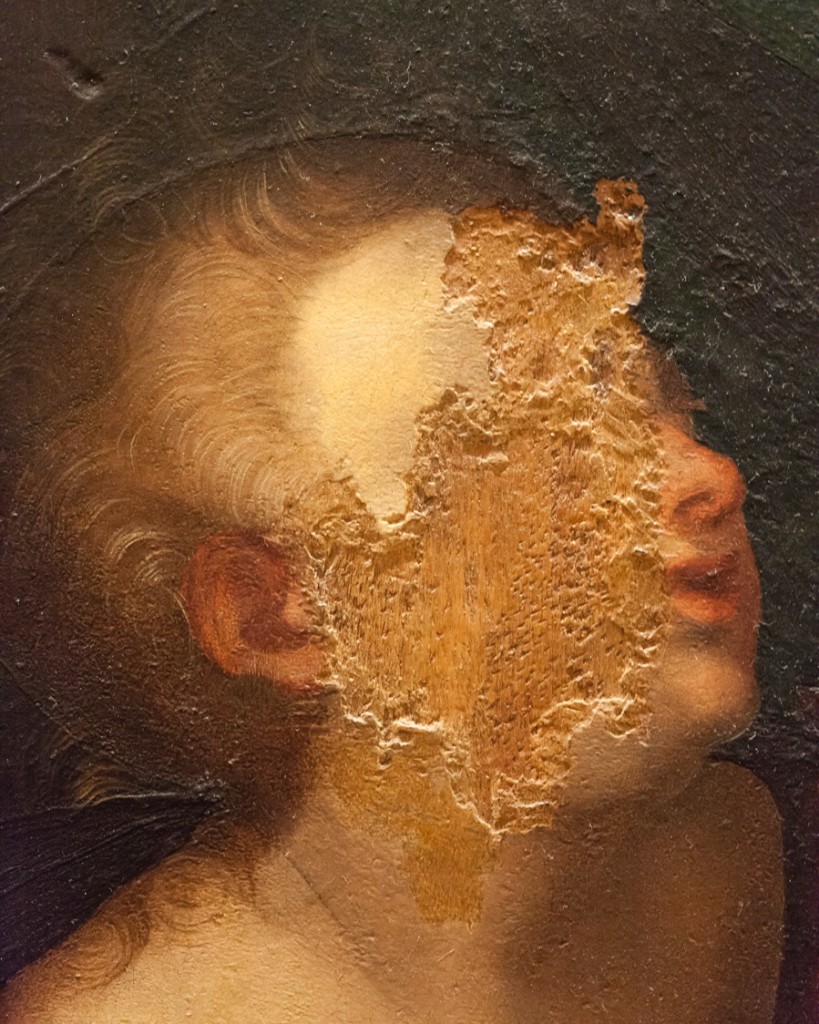Zorawar Sidhu
Grant awarded Spring 2015
Website:
http://zorawarsidhu.tumblr.com/
With the Kossak travel grant, I travelled to the Hugh Lane Gallery in Dublin, Ireland, to visit the reconstructed studio of Francis Bacon, which has been relocated from London. The inspiration for this project was Bacon’s interest in Diego Velázquez’s 1650 Portrait of Pope Innocent X, a painting which was the primary reference for Bacon’s 1953 series of papal portraits.
The contents of the studio in Dublin indicate that Bacon had accumulated numerous books on Velázquez, and torn out the pages reproducing the Portrait of Pope Innocent X. Some of these pages were found in the studio, altered by layers of paint, ashes, and other studio debris, and thus transformed into intermediates between the painted original, its reproduction, and the original paintings that followed.
Although he was fascinated by the painting, Bacon mentioned during his interviews with David Sylvester that he intentionally avoided seeing it in person. Nevertheless, I noticed a copy of Jonathan Brown’s Velázquez: Painter and Courtier in Bacon’s studio. The book was published in 1988, and therefore acquired by Bacon long after his direct references to Velázquez in the 1953 paintings. In 1992, Bacon left his studio for Madrid, and died soon after a visit to the Prado. His copy of Velázquez: Painter and Courtier remained on the studio floor, attesting to Velázquez’s enduring influence.
The Portrait of Pope Innocent X, however, is not in Madrid. It is housed in the Galleria Doria Pamphilj in Rome, where I concluded my trip. Having only experienced the painting through reproductions, I felt it necessary to close the distance between reproduction and original which Bacon had so intentionally maintained. Once finally in front of the painting, the context of the summer heat of Rome was an inescapable aspect of the viewing experience. The craquelure of its surface, lit by a diffused skylight as well as a spotlight, suggested droplets of sweat shining across the pope’s face. In this moment, I realized the importance of acknowledging the presence of an active world around a painting — both as an explanation for the need for Bacon’s studio debris, imposing the life of his studio onto Velázquez’s original, as well as for my own studio practice at Hunter.
